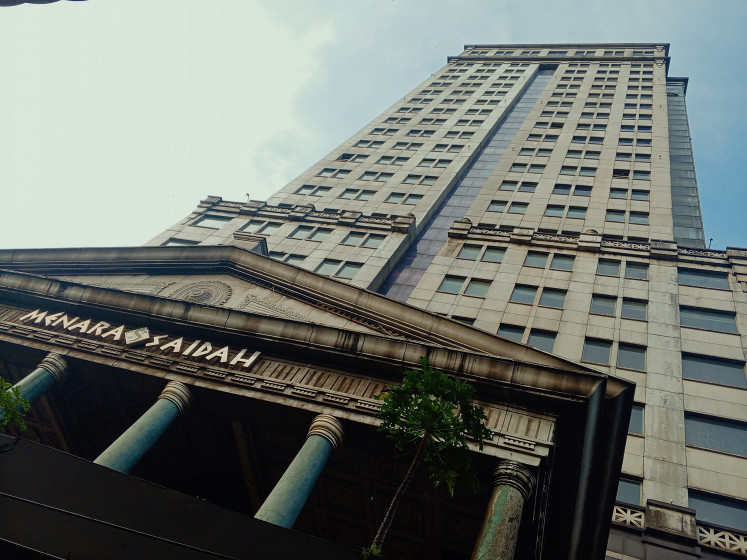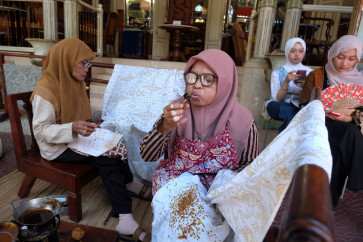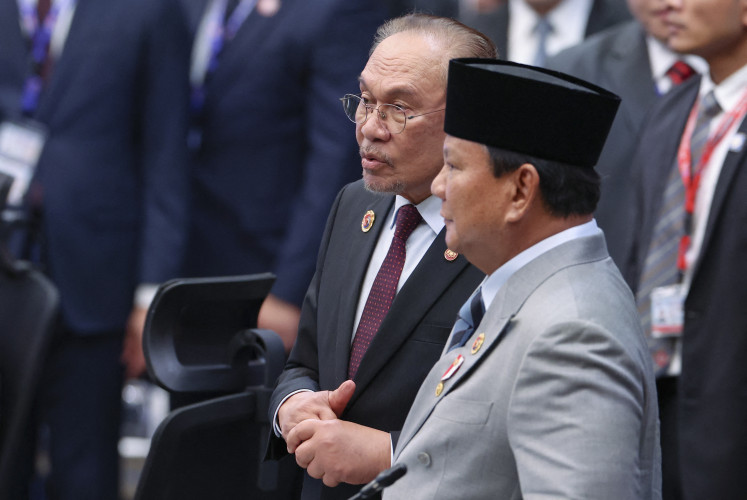Popular Reads
Top Results
Can't find what you're looking for?
View all search resultsPopular Reads
Top Results
Can't find what you're looking for?
View all search resultsYoung dancers liven up 'Topeng Malangan' rituals in Malang
The ritual was followed by 20 young dancers donning white dresses and yellow shawls, students in Polowijen village's cultural hub.
Change text size
Gift Premium Articles
to Anyone
A
gamelan performance in digital format accompanied the parade ritual of the Topeng Malangan (Malangan Mask) young dancers taking place in the burial area of Malang Mask creator Mbah Reni (Njondro Soewono), located in Polowijen in Malang, East Java over the weekend.
The burial area of Mbah Reni is part of the Polowijen Culture area (KBP), which contains the Windu Ken Dedes well site and Mbah Reni's tomb. The ritual was followed by 20 young dancers donning white dresses and yellow shawls, students in Polowijen village's cultural hub.
Isa Wahyudi, the ritual coordinator, said the children and adolescents participating in the ritual procession had followed the basic learning stages and the dance movements of the Malangan Mask art for at least six months.
The Malangan Mask dances taught included the bapang dance, sabrang dance and yellow ragil, as well as the traditional tembang mocopot and prayer ceremonies.
"For masks, there are new and old ones, but have never been prayed for in a special ritual like now," Isa said on the sidelines of the event on Sunday.
The ritual procession began with the parading of 20 dancers and 20 masks to the Windu Ken Dedes well site, which is upheld as an "endless well" in the history of the Singosari Kingdom and is tied to the Ken Dedes Ken Arok story.
Read also: Dancer Didik Nini Thowok hopes to preserve cross-gender performance culture
At the site, there were prayers and reading of tembang mocopat led by the funeral complex key master. The ritual procession continued to the Mbah Reni tomb, which is 100 meters from the well.
During the procession, the dancers carried the Malangan Masks that would later be used when they appeared in the dance performances.
"The cultural ritual for Malangan Mask dancers and the initial mystical scene for the Malangan Masks is to prepare for the dancing. The goal is to insert the mystical aura into the mask for the dancers' performance," Isa said.
The dancers impressed the audience during the performance, which was delivered with an extra touch of charm in addition to the traditional movements.
The cultural tradition has been held for generations since Mbah Reni, which was then passed on to Mbah Karimun Pakisasji and Ki Soleh Adipramana in Tumpang.
"But the ritual procession is different. In addition to being a learning platform for dancers, it also teaches that mask dancing not only teaches the movements, characters and figures in the story but it also teaches the process of making Malangan Masks,” said Yudhit Perdananto, a Malangan Mask artist.
Ritual veterans hope the young dancers continue to learn the movements and the soul of the Topeng Malangan art, as well as help it grow and introduce it to the community the live in.
"It is difficult to learn the Malangan Mask dance. I’m happy to have been able to learn the typical Malang dance in the KBP studio and hopefully after this ritual, I will be better at each dance show," said 13-year-old Aprilia Ayu Wulandari. (liz/kes)











